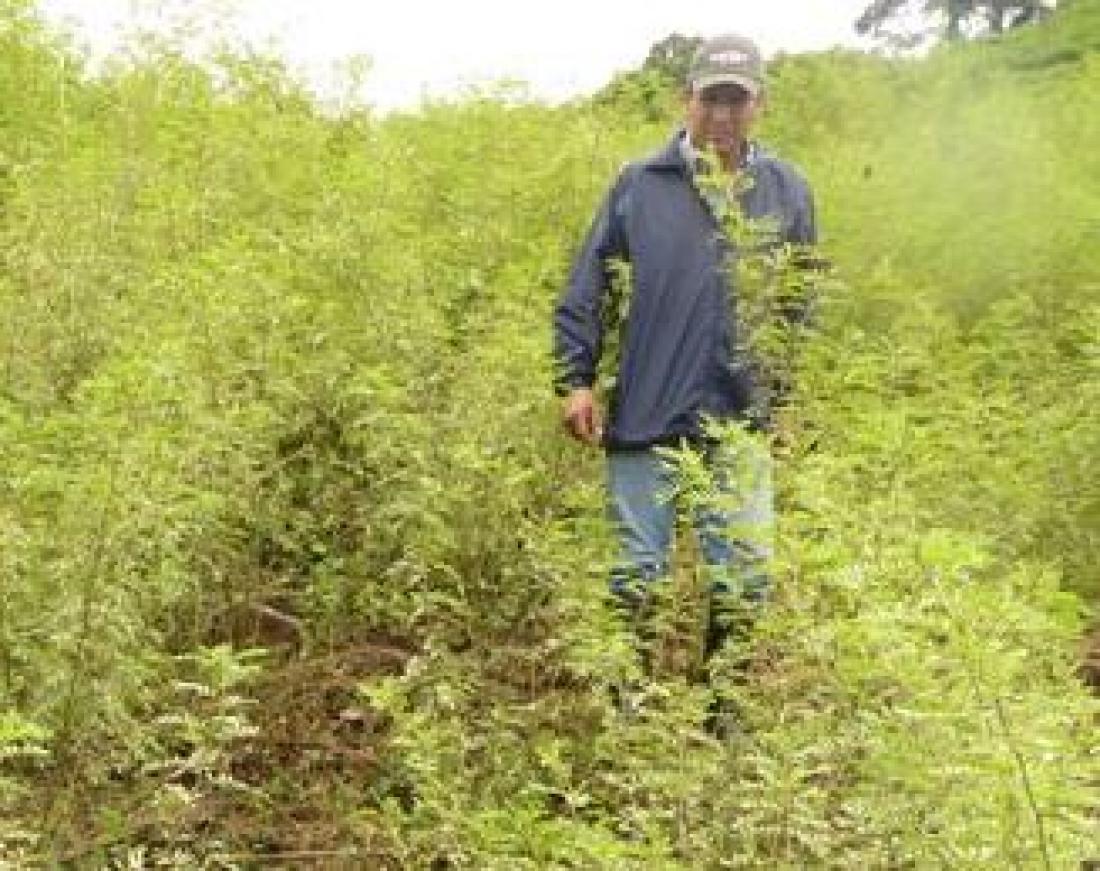Written by Marie-Ève Rochon
Jose Cosme is a 54-year old family man. From 4 a.m. to 1 p.m., he grows true indigo plants from which indigo is made. “I heard about Asociación Bálsamo’s project,” he says. “I got involved because there are many problems plaguing the community, like unemployment and poverty.”
Santos Inocente Conce, 48, is a native of Los Conce. Every morning at 5 a.m., she and the youngest of her three children head over to the indigo plantation, where they clean and fertilize the crops.
Jose and Santos Inocente are among the 18 families of the San Lucas community – which is located about an hour’s drive northwest of El Salvador’s capital – who celebrated their first harvest of true indigo leaves under fair and sustainable conditions, last August.
Since 2000, Asociación Bálsamo, a Salvadorian organization, has been trying to introduce a new method of growing indigo that would help increase the revenue of small producers. Now a group of researchers from the University of Alberta and the International Development Research Centre (IDRC) has joined the project.
PRODUCTION OF INDIGO IN AMERICA
At the time of the Spanish colonization, indigo was South America’s main export. When Asian countries, most notably India, started growing a greater number of True Indigos than the South Americans, coffee became South America’s main export. During the late 1990s, when it was discovered that natural dyes were safer than synthetic dyes, there came a greater demand for natural indigo. As a result, the sale price of indigo skyrocketed; it now sells for roughly $100/kilo, as opposed to coffee, which sells for $4/kilo.
GREATER REVENUE
The first step in raising the income of small farmers is to turn them on to the idea of making more money by getting involved in the production of indigo. Cane sugar farmers, who are also present in this region, make US$350 for every hectare of cane sugar crops they grow. This is in contrast to indigo farmers who receive US$430 for every hectare of cultivated land—or rather, $860, since they yield two harvests per year. “Nevertheless, we don’t want the community to put all their eggs in one basket,” says Luc Mougeot, the project leader at IDRC. Thus, the 18 families who are partaking in the project are using indigo in other ways; to dye clothes, jewellery and craft items. “When we sell products that are dyed rather than just sell the indigo in its powdered form, we can make 5 to 10 times more profit,” explains Luc Mougeot. “And if the product sold is certified organic, that’s even better—we can boost the sales price up 25%.”
GREATER PRODUCTIVITY
“Our desire to market indigo meant that we had to do field research and find out how we could increase productivity,” says Luc Mougeot. The teamwas able to get their hands on True Indigos with a 45% higher dye content in their leaves.
ENVIRONMENTAL CONCERNS
From production to waste management, this project follows green practices. The upright growth of the True Indigo’s roots enhances the soil’s fertility, so there’s no need for chemical fertilizers. The drying of the leaves is done in vats outside, so only solar energy is employed. The researchers alsomade a vow to avoid using chemical insecticides to get rid of insect pests; they set up “light traps” to attract them instead. Even the amount of nutrients in the crop residue, which is composted, is studied.
A TARGET MARKET
First, the indigo products from the community of San Lucas will be sold exclusively in El Salvador. “The local market, which includes the tourist market, is already booming,” says Luc Mougeot. Later, they will expand their market to neighbouring countries like Guatemala and Honduras, and eventually, maybe even Europe.
This story originally appeared in the November-December 2010 issue of Atmosphere, published by TVA Publishing for Air Transat.



